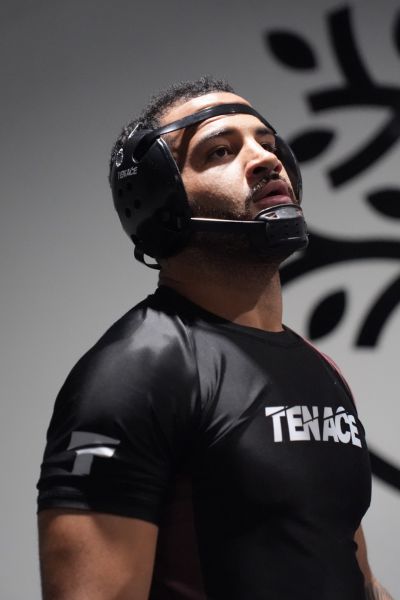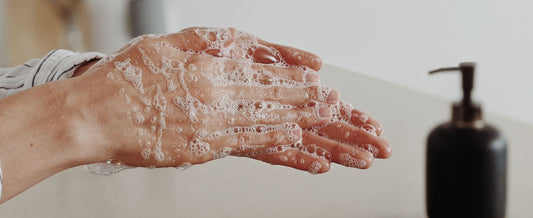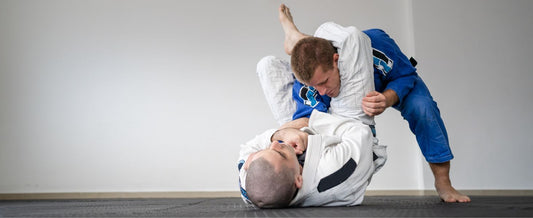Index
- Why do wrestlers seek out these recovery methods?
- What is cryotherapy?
- Ice baths: what do they do to your body?
- Saunas: A real tool or just relaxation?
- Real benefits for fighters
- Common risks and mistakes
- When should you (and when shouldn't you) use them?
-
Why didn't athletes use these methods before?
We're increasingly seeing fighters, athletes, and celebrities on social media soaking in ice baths, intense saunas, or cryotherapy chambers. But is it just a fad, or does it really offer benefits for those who train in combat sports like Jiu-Jitsu, Grappling, or MMA?
In this article, we break down what the science says, the real-world experience of athletes, and what you should keep in mind if you're thinking about including any of these methods in your recovery routine.
1. Why do fighters seek these methods?
Combat sports like Brazilian Jiu Jitsu, Grappling, wrestling, and MMA require extremely high physical and mental levels. It's not just about striking or throwing down, but also about enduring weeks of intense training, constant joint stress, blows, mental stress, and emotional exhaustion.
That's where recovery methods like cryotherapy, ice baths, and saunas come in. They're not just fads. They're real answers to real needs.
Combat chronic inflammation
After training, the body enters a natural inflammatory state. This is part of the adaptation process. But in contact sports, that inflammation increases : impacts, twists, dislocations, micro-injuries, etc.
Ice and cryotherapy help reduce localized and general inflammation. This speeds recovery and prevents minor discomfort from becoming injuries.
Recover damaged tissues and joints
Knees, shoulders, neck, fingers... these are areas that suffer tremendously in the daily grind of grappling or Jiu Jitsu. If they don't recover properly, they become weak points.
Cold baths and cryotherapy accelerate the healing process by improving blood circulation after the session. Saunas, meanwhile, relax deep muscles and improve mobility.
Regulate the nervous system and reduce stress
Few things are as tiring as a week of sparring, pressure drills, and competition preparation . It drains you not only physically, but mentally as well.
-
Exposure to cold activates the sympathetic nervous system, releasing dopamine, adrenaline, and noradrenaline . This improves mood, provides mental clarity, and helps you better manage stress.
-
Saunas, on the other hand, stimulate the release of endorphins and help you shift from "fight" mode to "recovery" mode.
-
Many wrestlers use them to "calm down" and sleep better.
Sleep better
Sleep is a fighter's true medicine. But when the body is severely inflamed, with muscle pain or mental tension, getting a good night's sleep becomes difficult.
Both cryotherapy and saunas have been shown to improve sleep quality in high-performance athletes. After a cold or heat session, many report deeper, more restful sleep , which directly impacts their performance the next day.
Create a stronger mindset
Getting into an ice bath or enduring 15 minutes in an extreme sauna isn't just physical, it's mental. It's uncomfortable; the fighter is training his resilience .
They learn to breathe under pressure , to manage discomfort with control, and to not let stress or pain take over.
Now, you might be wondering, what is cryotherapy? We'll explain it below.
2. What is cryotherapy?
Cryotherapy is a treatment that uses extreme cold to reduce inflammation, relieve muscle pain, and speed recovery . Although the technique has evolved significantly, the idea is the same as applying ice to an injury: using cold as a therapeutic tool .
There are different ways to apply cryotherapy depending on the intensity and objective:
1. Ice baths
It is the most traditional and accessible method.
It involves immersing yourself in a tub of very cold water (between 4°C and 10°C) for 3 to 10 minutes. It's very popular among wrestlers, runners, cyclists, and high-performance athletes, as it helps reduce muscle inflammation, pain , and improve circulation after intense workouts.
2. Whole Body Cryotherapy
This is a more modern and controlled treatment.
You enter a special cabin that exposes you to temperatures between -110°C and -160°C for 2 to 3 minutes. The cold is generated with liquid nitrogen, and the exposure is very brief but intense. Upon exiting, the body enters a state of "physiological alert," responding with improved blood flow, the release of endorphins, and a reduction in pain .
3. Localized cryotherapy
Ideal for specific areas such as knees, elbows, neck or back.
Devices that emit cold air (-30°C or more) are applied directly to the injured or inflamed area. Ice packs, cryogenic spray, or special compresses are also used. This is very useful for treating bruises, sprains, or painful areas without the need for general cold.
Where can cryotherapy be done?
✅ At home: If we're talking about ice baths, you can do them yourself in a bathtub or large bucket. All you need is cold water, ice, and a timer. It's the cheapest and most accessible method.
✅ At sports centers and recovery spas: More and more specialized facilities offer whole-body cryotherapy or temperature-controlled cold baths. Some include professional guidance and specific protocols based on your sport.
✅ In advanced physiotherapy clinics: especially localized cryotherapy, widely used by physiotherapists for recovery from joint or tendon injuries.
3. Ice baths: what do they really do?
Cold baths have become an essential routine for many practitioners of Jiu Jitsu, grappling, wrestling, and MMA . It's not a passing fad; it's a powerful tool for performance, recovery, and mental toughness .
What happens to your body when you get into ice water?
When you dive into water at temperatures between 4°C and 10°C , your body goes into “survival” mode:
Blood vessels constrict (vasoconstriction), which reduces inflammation, and hormones like adrenaline, dopamine, and noradrenaline are released, which activate the nervous system and improve alertness. And once you leave the water, your body warms up, and blood flow increases, bringing fresh nutrients to your muscles.
This is key to recovering faster, relieving muscle soreness, and preventing injuries .
Benefits of cold baths for wrestlers
1. Reduction of inflammation and muscle pain
After tough sparring or drilling sessions, your muscles are inflamed. Cold water helps reduce that inflammation, reducing soreness the next day.
2. Improved circulation
The contrast between cold and body temperature creates a circulatory "pumping" effect. Blood flows better, is more oxygenated, and muscle toxins are eliminated.
3. Mental strengthening
Getting into icy water isn't comfortable , and that's where the power lies: you train your mind to stay calm under stress. This prepares you for real-life situations on and off the mat.
4. Regulation of the nervous system
Cold baths calm the sympathetic nervous system (fight/flight mode) and activate the parasympathetic nervous system (recovery mode). It's ideal for sleeping better and cooling off after a workout.
5. Potential improvement in mood
Studies show that cold stimulates the release of dopamine by up to 250% . Many wrestlers report a post-swim boost of energy, mental clarity, and motivation.
How long and what temperature is ideal?
If you are a beginner, start with cold showers or baths for 1-2 minutes and gradually increase.
- Recommended temperature: between 4°C and 10°C . It is not necessary to go to the absolute extreme.
- Exposure time: 3 to 10 minutes , depending on your experience and tolerance.
-
Frequency: 2 to 4 times per week is enough to notice real benefits.
Please note:
- Avoid cold baths just before a hard workout, as they can temporarily reduce muscle power.
- People with heart problems or low blood pressure should consult a doctor.
- Never do it alone , especially if it's your first time.
-
Do not exceed 15 minutes , neither in low temperatures nor without supervision.
Can you do it at home?
Yes. You just need:
✅ A large bathtub or container
✅ Very cold water + ice packs
✅ Stopwatch
✅ Towel and warm clothes for later

4. And the sauna?
After intense training and the physical stress of fighting, many fighters look for ways to speed up recovery, improve their mental resilience, and regulate their bodies . And that's where saunas come in : an ancient technique that is once again in the spotlight for high-performance athletes.
The sauna isn't just relaxing. Used correctly, it can become a powerful tool for improving the physical and mental performance of any martial arts practitioner.
Being in a sauna—at temperatures between 70°C and 100°C —elicits an intense physiological response. It increases body temperature, dilating blood vessels. The cardiovascular system is activated; your heart can beat as fast as 120–150 times per minute, as if you were jogging.
It also increases sweating and the elimination of toxins. It also activates heat shock proteins (HSPs), which help repair muscle tissue and protect cells from damage.
Benefits of the sauna for fighters
-
Improved muscle recovery
Deep heat relieves muscle tension, accelerates the elimination of metabolic waste, and helps the body recover faster after demanding workouts. -
Increased cardiovascular endurance
Using a sauna regularly can improve cardiovascular function, similar to doing light cardio. Some studies indicate improvements in VO₂ max and exercise endurance. -
Reduction of joint pain and stiffness
The heat penetrates the muscles, tendons, and joints. Ideal for wrestlers with chronic knee, shoulder, or back pain. -
Stress control and improved sleep
Sauna stimulates the production of endorphins and serotonin , relaxing the nervous system and helping you sleep better. This is key to recovery and staying mentally sharp. -
Increased tolerance to heat and physical stress
Training under tough conditions—such as long rounds of grappling or a weight cut before a competition—requires mental toughness. Sauna training helps strengthen your mind by training you to withstand physical discomfort.
How long is recommended?
Don't use the sauna immediately after your workout if you're dehydrated or haven't had a light meal. Stay for 15 to 20 minutes, 2 to 4 times a week, and then always rehydrate with water and electrolytes.
- If you have heart problems or low blood pressure, consult a doctor first.
- Avoid alcohol before or after the sauna: it increases the risk of dehydration or low blood pressure.
-
If you feel dizzy, nauseous, or unwell, leave the sauna immediately.
Combining sauna and cold?
This is where it gets really interesting. Many athletes are adopting hot and cold exposure protocols , where they alternate:
- 5–10 minutes in sauna
- 1–3 minutes in a cold bath
-
Repeat cycles (up to 3 times)
This creates a “contrast” effect that stimulates the circulatory system, improves adaptation to stress, strengthens the immune system and accelerates recovery .
And the mind?
Being in a sauna, enduring the heat and controlling your breathing, trains mental toughness . Many fighters claim it helps them stay calm under pressure, which is crucial in tough competitions or sparring.
5. Real benefits for fighters
✅ Reduction of joint pain
✅ Better muscle recovery
✅ Greater capacity to train more days a week
✅ Improved sleep (key to true recovery)
✅ Feeling of well-being and mental relaxation
6. Common risks and errors
- Using ice baths immediately after strength training → can limit muscular adaptations.
- Staying too long → Extreme cold or heat, if applied incorrectly, can cause skin damage or dizziness.
- Not hydrating properly after the sauna → excessive fluid loss.
- Relying only on this and neglecting nutrition or sleep.
7. When to use them (and when not to)?
Use them if...
-
You've had a particularly tough workout.
-
You come from competing or doing demanding sparring
-
You feel overload or inflammation
-
Are you looking to improve your overall rest or recovery?
Avoid them if...
-
You're trying to gain muscle mass (right after the gym)
-
You have blood pressure or circulation problems
-
You haven't slept or eaten well (this comes first)
They work and serve you well … if you use them right.
Cryotherapy, ice baths and saunas are not magic , but they are valuable tools to improve your recovery, reduce injuries and train longer and better .
Combine these techniques with good nutrition, rest, and conscious training, and you'll see your performance take to the next level.
A very good question—and perfect for adding more value to the blog about cryotherapy, saunas, and ice baths. Let's develop it in detail, as a new section to integrate or expand the original content:
8. Why didn't athletes use these methods before?
While today we see wrestlers submerging themselves in ice baths and sharing sauna selfies as part of their routine, these practices weren't always common in the sports world, much less among wrestlers.
Here's why:
Lack of scientific information and accessibility
Until a few decades ago, recovery wasn't as well-studied a topic as it is today. The focus was on hard training, on "no pain, no gain."
Terms like chronic inflammation , active recovery , or hormonal response to cold/heat were not on the radar of the average athlete or their coaches.
Furthermore, the infrastructure for using these methods was limited . Only professional teams or elite athletes had access to cryotherapy chambers or recovery facilities with thermal contrasts.
For a long time, "being strong" meant not complaining, not resting, not seeking relief . Many fighters grew up in environments where asking for ice was considered "soft."
This mentality caused many athletes to ignore the benefits of recovery techniques, even when they began to become popular.
The value of recovery was underestimated
It used to be thought that training was the only thing that mattered: more hours on the mat, more sparring, more rounds.
Today we know that without a good recovery, there is no real progress .
What's more, the body improves during recovery, not during exertion.
That's why cryotherapy, cold baths, and saunas are no longer "fads," but rather science-backed tools , especially useful for contact sports where there is joint wear, bruising, and constant muscle fatigue.
Influence of networks and elite athletes
The rise of platforms like Instagram and YouTube has also played a key role. Seeing UFC champions, BJJ fighters, and CrossFit athletes sharing their recovery routines has normalized and democratized these practices.
Now you know what Gordon Ryan, Israel Adesanya, and IBJJF athletes do to take care of their bodies. And that motivates thousands to try it too.
And you?
If you haven't yet incorporated recovery methods like cold or heat into your routine, don't view it as a luxury.
Think of it as part of the invisible training that allows you to train harder and better.
--------------------------------------------
Have you tried protecting yourself during your workouts?
If you are training Grappling or Jiu Jitsu intensely, prevention is also part of your recovery .
At Tenace we select equipment that protects what's most important:
✅ Earmuffs to avoid cauliflower
✅ Impact knee pads for floor positions
✅ Elbow and ankle pads for demanding workouts
👉 Check out our specialized collection:
🔗 See protections for Grappling and BJJ
And you? Have you tried ice baths or saunas after training? Did you notice a difference?
Tell us about your experience or leave your questions in the comments.





